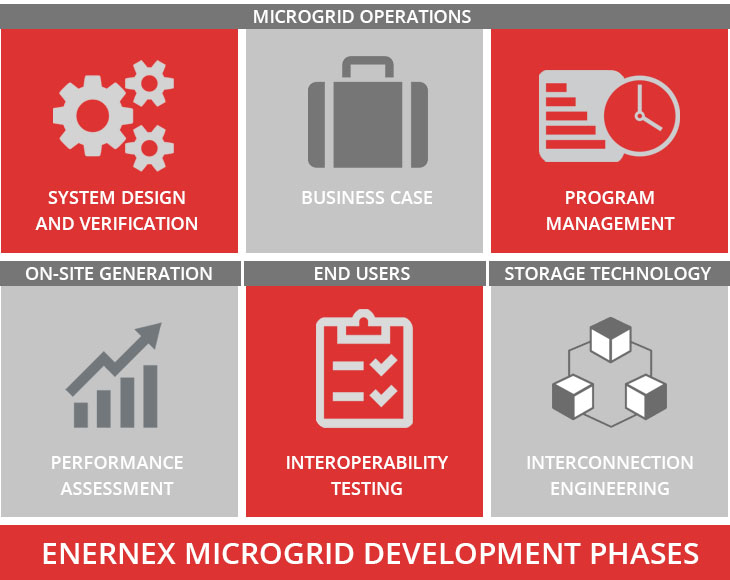Published via Smart Energy International Issue I 2020
Connect with the Author

Neil Placer
Director of Utility Services Consulting
nplacer@enernex.com
865-218-4600 x8101
Grid modernisation (Grid Mod) is a complicated topic. To deny so, would be a foolish claim.
The traditional utility grid has often been labelled the “most complicated machine ever built”. Given the charter of Grid Mod is to modernise an already complicated machine, it comes as no surprise that complexity will only compound not lessen. The shear breadth of topics encompassed by an evolving and futuristic two-way power flow grid system is enough to make people throw up their hands in confusion and dismay. Speaking of the future, the concept of Grid Mod is also not static; it involves modernisation of the grid over a continuous time horizon. In essence, Grid Mod never really ends. It is a continuous pursuit. Feeling overwhelmed yet?
Let me pose a few important questions:
If Grid Mod is so complicated, who can possibly help utilities forge a ‘no regrets’ path forward in this new grid era? Is anyone really qualified to do so and are there practical ways to plan for Grid Mod? These are legitimate questions. It is not a self-serving softball thrown up for a ‘hypothetical’ consultant to swoop in and say, “We are here to help.” Before addressing this, let’s step back for a moment to consider and gain some more perspective regarding complex decision making. One of the biggest paradoxes associated with any complex topic is that the best solutions are typically found by seeking to maximise simplicity. When I say ‘simplicity’ I am not implying reductionism or the elimination of key information for the sake of clarity. By simplicity I mean distilling the salient points into an easily understandable and explainable framework that is actionable.
Another way of expressing this is to say that good strategy involves the art and science of taking a complex topic and examining it to find common patterns, groupings, and themes. These insights can then be synthesised into a more digestible perspective to address the complex challenge at hand. If more people are able to see a common pattern, then the strategic direction and corresponding tactical solutions become easier to identify and resolve. This sounds logical enough, but it often tends to be the path less taken. Other typical approaches include:
- Delaying in deciding, also known as ‘kicking the can’
- Pursuing isolated initiatives based upon various drivers (internally or externally mandated) and
- Over-analysing a problem before pursuing a definite direction.
The first two are clear, so let me provide an example of the third. People typically get caught in ‘analysis paralysis’ when they seek to foresee and explain 100% of the details of a multi-pronged tactical approach. A good way to visualise this is to imagine being responsible for designing a large-scale transit system. Would you begin to spec out every vehicle highway on-off ramp detail before understanding which types of transit systems you want to pursue, the specific pathways and focus for each transit system, and the overarching goal of the entire enterprise transit system? What if you were also having to figure out how to build upon an already established infrastructure? Sound familiar? Change a few key terms and suddenly you are talking about the utility industry.
A more practical example can be seen in examining the energy industries’ relentless pursuit to justify the ‘exact value’ of various distributed energy resources (DERs). This quest has often proven to be a fruitless one, analogous to seeking to pin down a ghost by a group of ‘Ghostbusters’ that can’t agree on the best means and approach to catch it. This type of scenario is screaming for simplicity to step in to save time, effort, and frustration. In fact, it already has. If instead of seeking to define various stacked component values of DER, and doing so to the nth degree, couldn’t we simply agree to pursue the ‘least cost, best fit’ approach? In other words, the solution that costs the least amount of money, typically identified via a solicitation process, and that best fits within a comprehensive Grid Mod plan. This difference in strategic vs. tactical approach is not a hypothetical one. This is partially what separates some of the discussions occurring in leading Grid Mod jurisdictions across the country: namely California, New York, and Hawaii.
If we can agree on a ‘least cost’ approach, how do we know which DER is the ‘best fit’? Great question. You first need to step back to find out how various resources fit within a larger architectural landscape. In other words, a holistic enterprise architecture needs to be developed that maps out the current and future landscape being pursued. This step helps identify how all the components fit together both now and going forward. What you will find is that certain DERs begin to emerge to play a larger role than others based on a specific deployment context. Let’s assume for the moment we are referring to midsize solar PV. At this point we can stop arguing about its ‘exact value’ and seek to pursue defined targets (e.g., capacity levels, deployment timelines, individual and aggregate scales of deployment) in a least cost manner. In other words, the Ghostbusters now have a commonly defined target, a clear direction, and can collectively pursue the most prudent options available.
Let me return to the original question posed: Are there realistic and practical answers to Grid Mod? The answer is emphatically ‘yes.’ However, you first must determine if Grid Mod solutions are compatible with your utility. This can be determined by answering several questions:
- Are you willing to strategically plan at an enterprise (system-wide) level?
- Can you lead and execute implementation solutions from an organisation-wide perspective?
- Are you persistent enough to stick with a plan, while remaining open-handed and flexible enough to adapt to a dynamically changing landscape?
It’s easy to see that answering ‘yes’ to these questions requires Grid Mod to be in the DNA of a proactive and forward-leaning utility leadership team. Additionally, the degree of emphasis in response can dictate the desired speed and level of Grid Mod maturity a utility is ultimately pursuing. At the end of the day, the utility industry is on a Grid Mod continuum and each utility must find its place and vehicle on that journey. Many electric utilities share common goals and overarching objectives, but a singular ‘silver bullet’ for Grid Mod does not exist.
The key differences have to do with the desired magnitude of scope, anticipated pace of deployment, and drivers and barriers that are largely impacted by the local context.


